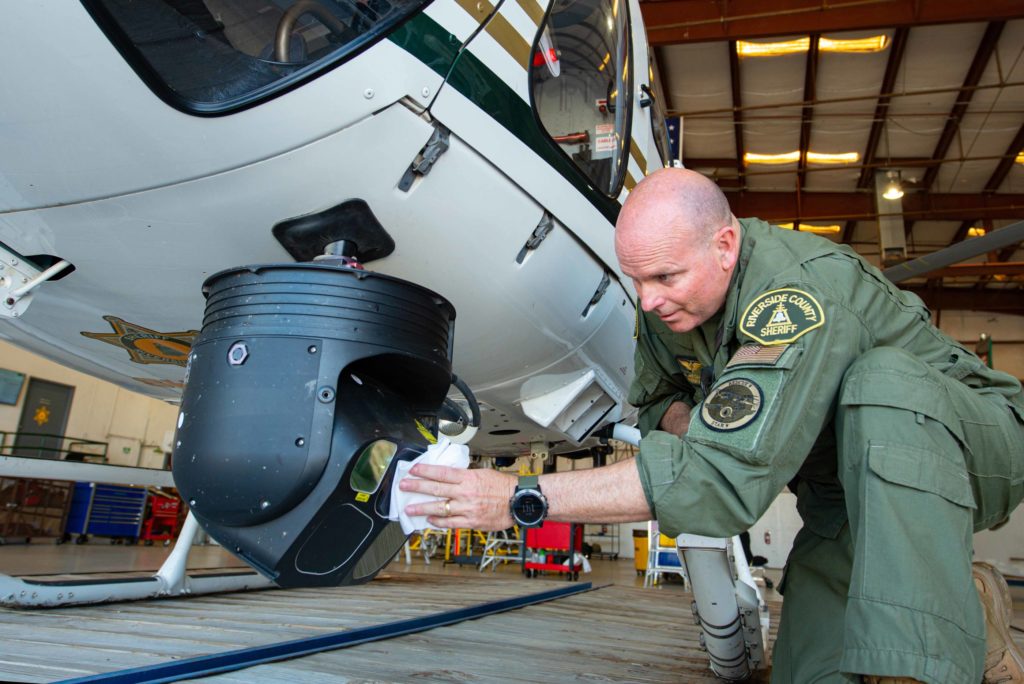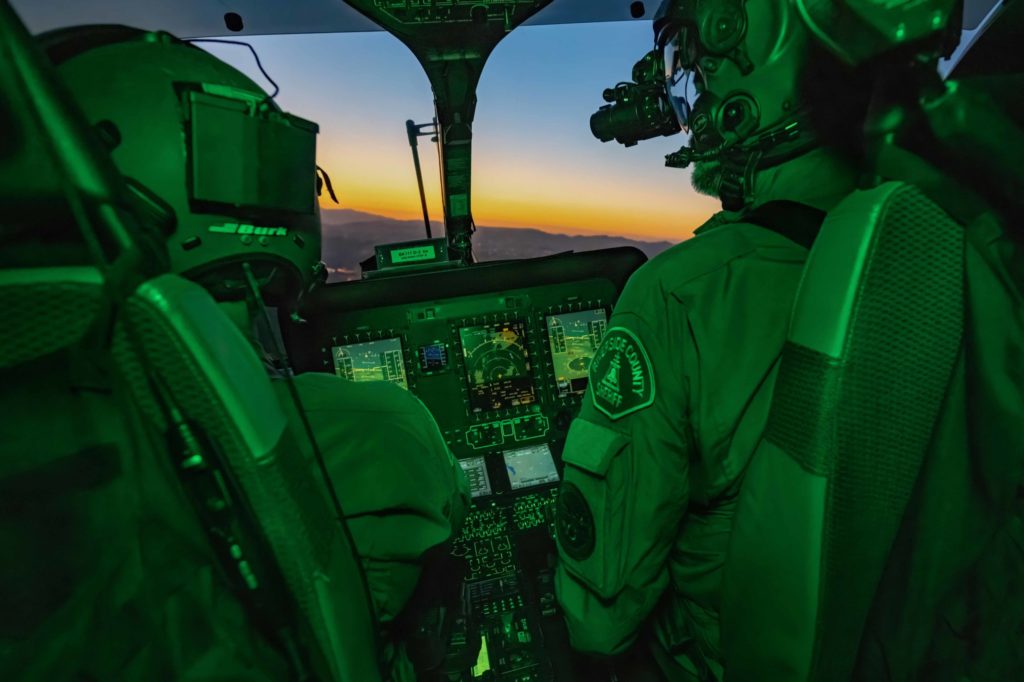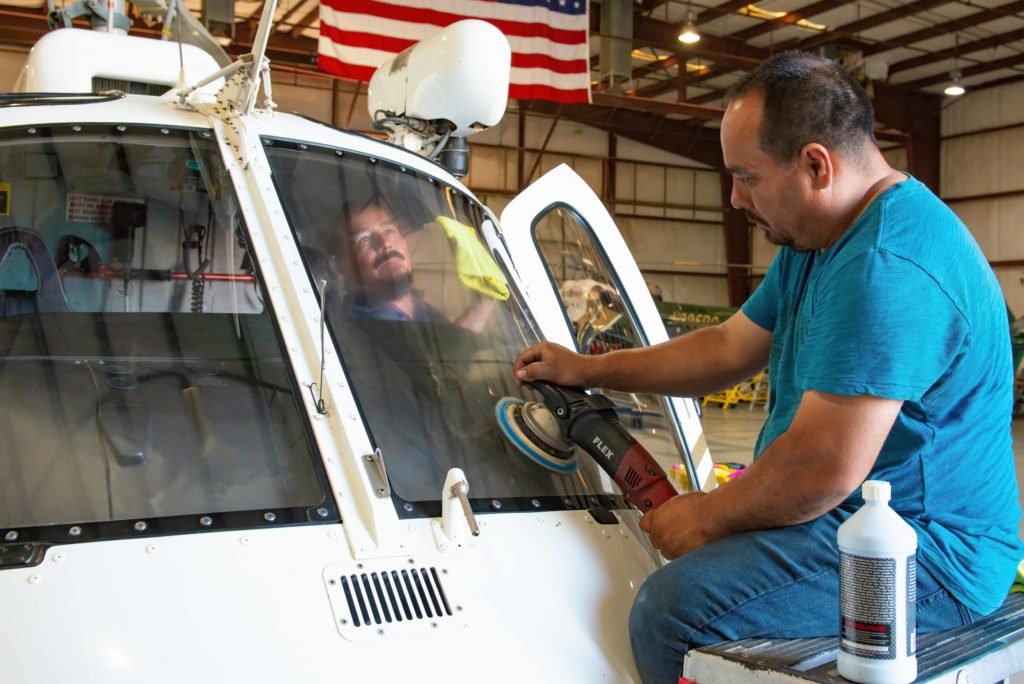Since the early 2000s, the Riverside County Sheriff’s Department Aviation Unit (RCSDAU) has operated as many as five Airbus AS350/H125 AStar helicopters. The current fleet consists of one B2, two B3 and two B3E models, each configured with a compliment of mission equipment and external rescue hoists.
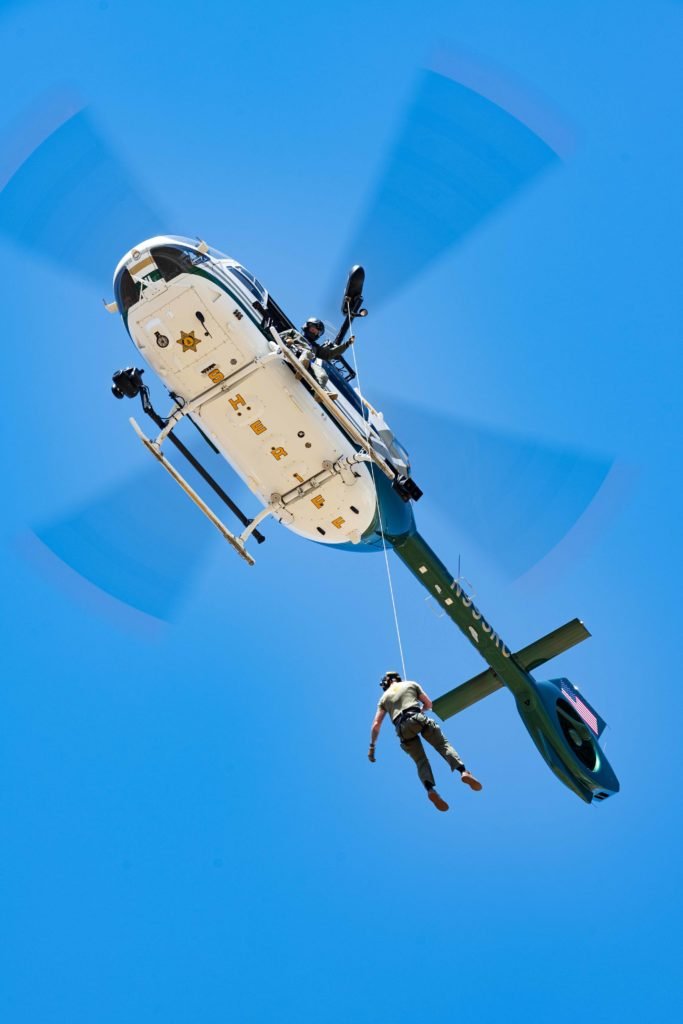
While law enforcement support is their primary mission, the unit is also responsible for a significant search-and-rescue (SAR) call volume. Over the years, however, responses to many SAR missions were delayed by circumstances beyond the crew’s control. These inefficiencies were unavoidable and frustrating.
The reasons for the delays are twofold: First, the immense size and terrain of Riverside County – it’s the fourth largest county in California, encompassing 7,303 square miles (18,910 square kilometers). From its western boundary with Los Angeles and Orange County, it extends east for roughly 180 miles (290 km) to the Colorado River and the border with Arizona.
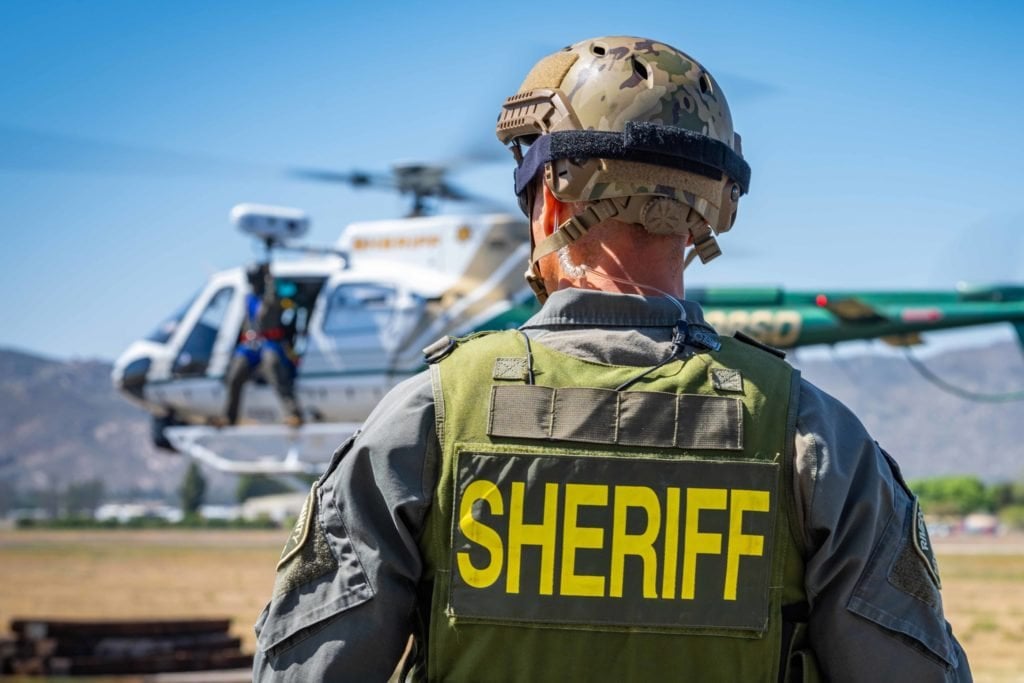
Then there’s the terrain: Mountain peaks to 10,843 feet (3,305 meters) and expansive desert regions, home to familiar destinations like Palm Springs, La Quinta and Rancho Mirage. But there are also swaths of austere desert, with elevations down to 234 feet (71 meters) below sea level, where summertime temperatures can reach 120 degrees Fahrenheit.
The second reason is the AStar’s rear cabin. RCSDAU aircraft are typically configured for the law enforcement mission. As such, they are not readily adaptable to perform unsupported search and rescue without some degree of reconfiguration. Even then, the AStar’s cabin has limited space for personnel and equipment.
In practice, when RCSDAU received a SAR call, regardless of where they were in the county, the aircraft often returned to home base at the Hemet-Ryan Airport, landed, shut down, and reconfigured – removing rear seats, loading SAR equipment, installing anchor points, and rigging the tactical flight officer in a harness for hoist operations.
The crew also had to coordinate with the volunteer rescue teams, Riverside Mountain Rescue Unit and/or Desert Sheriff’s Search & Rescue, who support the missions. Yes, the system worked, but everyone knew there was a better way.
A third, though less obvious, factor is the AStar’s limitation as a strictly VFR aircraft. When advection-radiation fog forms in the inland valleys, the AStar is often grounded – in the evenings and even into the mid- to late-morning of the next day.
Since in the earliest days of the unit, the aviation crews recognized how a twin engine, IFR-capable helicopter dedicated to the SAR mission could be a game changer and alleviate many of the delay issues. “We needed to work at high altitude,” said Tony Bowen, a former United States Marine Corps CH-46 pilot and one of four deputy sheriff’s credited with forming RCSO’s helicopter operations in the early 1990s.
“Our San Jacinto Mountain is at 10,800 feet, so we needed the high-altitude capability and the hoist capability, [as well as] a bigger cabin where you could put more people in the back [or] take the seats out … and do a lot more with it.”
Over the years, there were proposals floated for the purchase of such an aircraft. Unfortunately, at the time, there was no support from county and department administrators, who viewed the price tag as somewhat intimidating. Said one RCSDAU crew member, “They apparently felt, ‘you’re doing okay. You don’t need that. You’re getting by just fine with what you’ve got.’”
A new sheriff in town

The election of Chad Bianco in 2018 as Riverside’s Sheriff ushered in a wave of optimism. Pilots in the aviation unit knew Bianco and believed he’d be receptive to addressing many of the long-overlooked needs of the department, including the aviation unit.
Two years before Bianco took office, RCSDAU scored an “in-house” advocate when Sergeant Curtis Bright was assigned to the unit. While he had no aviation background, Bright was a leader. He had a keen sense of logistics and planning and could foresee, among other things, impending staffing shortages for the air unit due to retirements and attrition.
“This guy was amazing,” said Emanuel ‘Manny’ Romero, a pilot and 12-year veteran of the aviation unit. “He had no aviation experience, but he remembered where he came from. Even though he had that rank, he remembered what it was like to be a deputy sheriff and needing things to do your job. So, he would frequently come to all of us, sit down and ask, ‘so guys, what do you need? What can I do to make this unit more effective and grow? That’s my job.’”
In Bright’s first years with the aviation unit, purse strings were tight across the department. Personnel and equipment requirements seemed to be put off in favor of other projects. “For too long, we just operated with what we had,” said Bright. “If somebody took vacation or called in sick, we didn’t even go 10-8 (in service). Nobody flew. It was just the way it was.”
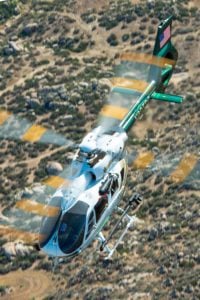
Even before Bianco took office in January 2019, he rolled up his sleeves, eager to go to work. “When he was the sheriff-elect, he came to us and asked, ‘What do you guys need?,’” said chief pilot Mike Calhoun.
“We told him how we really needed a light/medium twin [engine] helicopter and explained why: the efficiency; being able to hold more bodies and reduce repeated trips back and forth, which are often required with the AStars; reducing time on station. We explained the safety of twin engines and how an IFR platform would allow us to still operate during periods of low clouds and fog that we often experience here in Hemet. It gives us the opportunity to say ‘no’ a lot less.”
With Calhoun and his pilot cadre advocating for the new aircraft – they had identified the Airbus H145 as the ideal machine – Bright made his case for addressing pressing personnel and administrative matters.
“I realized there would be a number of guys that will be kicking-out in the next year or so,” said Bright. “And you know you just can’t throw somebody in there and expect them to go fly helicopters. We needed to get people in there so we could get them trained. So, I put together a proposal for more equipment and staffing and we took it to the Sheriff.”
Bright believed his proposal was modest. “I just wanted to get us the equipment and staffing we needed to survive.” The only “over and above” request was, if the H145 was indeed approved, he asked for additional staffing to serve as a crew chief/hoist operator.
To everyone’s surprise, Sheriff Bianco was not only supportive of the H145, but he also proposed a team of full-time deputy sheriffs, cross-trained as emergency medical technicians (EMT) to serve as dedicated rescue specialists, instead of adding just a crew chief/hoist operator.
The department reached out to Airbus Helicopters and arranged a demonstration flight in the H145. Sheriff Bianco, his command staff, and several members of the aviation unit came away impressed and even more enthusiastic to pursue a purchase. Funds were identified and soon allocated for the aircraft as well as the increased staffing.
Rescue 9 enters service
The new H145 was delivered in December 2020. A small number of pilots were initially brought up to speed in the H145 through instruction from Airbus. Those instructor pilots then developed a 40-to-45-hour training syllabus to serve as an in-house training template.
This block of instruction included advanced work such as IFR flying, a deep dive into the aircraft’s automation systems, and hoist operations. The unit also sought out the experience and wisdom from Las Vegas Metro Police, which had been operating the H145 on similar missions since 2018.
“We did day and night hoisting evolutions at the airport to become familiar with the aircraft’s handling characteristics and all of the different automations,” said Calhoun. “It has a lot going on – way more than hand-flying the AStars.

“With this aircraft, and with the level of automation – the four-axis auto pilot – it is extremely comfortable for everybody involved, from the hoist operator to hoist rider, the EMT, the pilot and co-pilot,” he explained. “It’s a much larger and more stable platform, and with the automation augmenting the pilot, especially at night, it’s just much more comfortable. Once the hoist operator announces the aircraft is over the scene, the pilot engages the GTCH, which is a ground trajectory control hover. It’s basically a GPS-based hover hold that holds us in our spot. A cooly hat on the cyclic lets us fine tune the aircraft one meter at a time.”

The H145, designated Rescue 9, entered service on March 25, 2021. It operates with a crew of two IFR pilots and three deputy sheriffs / EMT rescue technicians, typically from 10:00 am to 10:00 pm, seven days a week, though crews are available for callout outside of those hours. In the first year of operation, the helicopter was responsible for rescuing 128 persons during 78 individual missions.
Today, RCSDAU operates a fleet of five Astars and the H145 with eleven pilots, six tactical flight officers (TFOs), and six EMT/rescue specialists. Presently, four pilots have been trained to operate the H145. A fifth will begin training later this year.
Since 2010, RCSO has contracted initial and some advanced pilot training to Costa Mesa, California-based HeliStream. Typically, pilot training requires six months, which includes turbine transition training. Pilots then return to the unit where in-house instructors familiarize new pilots with the AStar and conduct mission training before signing them off to act as a pilot-in-command in a restricted capacity.
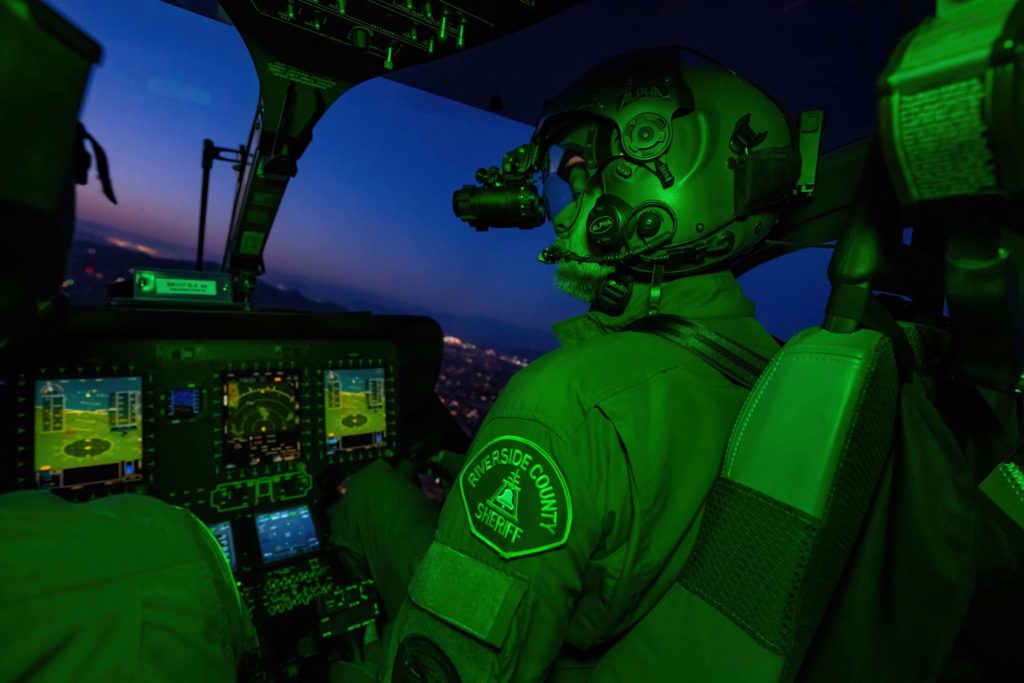
In 2021, the unit responded to 3,400 law enforcement calls for service, turning 3,000 hours on the five AStars. They operate seven days a week, with two overlapping 12-hour shifts, between 6:00 am and 3:00 am.
Luis Morales is the Director of Maintenance with RCSDAU. He manages a staff of five technicians, all of whom have been intimate with the AStars for many years. In bringing the H145 online, Morales admits there was a learning curve. But there were also similarities with the older aircraft, making the new platform fairly straightforward to assimilate into the fleet.
“The H145 is more sophisticated than the AStar,” said Morales. “It has the four-axis autopilot, the Helionix, Airbus’s avionics suite, the glass cockpit, onboard computers for maintenance and flight tracking. To be fully trained up on the H145 took two months of schooling: the airframe portion of the school was four weeks, the Helionix avionics suite was three weeks, and the engine was one week.”
Morales also acknowledged how the arrival of Sheriff Bianco’s brand of support has energized the aviation unit. “I’ve been here for almost 26 years and I’ve never seen the amount of support like we’re getting now from this sheriff. But a change of administration sometimes changes the direction of an organization. And right now, we’re in an up-tic and we’re finally expanding to where we should be.”
There is a great deal of optimism for the future of the unit. Plans include possibly acquiring up to two H125s to replace one of the high-time AStars. There are also talks of expanding to a second base of operations at the Jacqueline Cochran Regional Airport in Thermal, and perhaps moving the home base to nearby March Air Reserve Base (formerly March Air Force Base).
It has been 30 years since RCSD first launched its aviation unit. A small group of deputy sheriffs worked through many years operating MD500s and surplus OH6s and OH58s before settling on the AStar for their law enforcement and SAR missions.

“We started out as a small unit with just two birds and we just beat our way through for years,” recalled Bowen. “But [then] we got the two B3s and we were able to get one more, and then one more as time went on … I think by the time I left we had four or five B3s. And now they have that new H145. I sure wish I would have had that all those many years ago.”
“The Riverside County Sheriff’s Department Aviation Unit strives to be the best in their law enforcement role and search-and-rescue capabilities,” said Sheriff Bianco. “The men and women assigned to this unit share a vision of great service to our communities. A robust aviation program is essential for the safety of the public and for law enforcement officers on the ground. The state-of-the-art Airbus H145 has served our deputies, our communities, and our search and rescue teams well.
“The addition of our six EMT deputies [and] our rescue helicopter has substantially increased our capabilities as first responders in search-and-rescue incidents,” he concluded. “As RCSD continues to enhance the service to our communities in all areas, I am proud of the direction and commitment of our aviation unit.”








